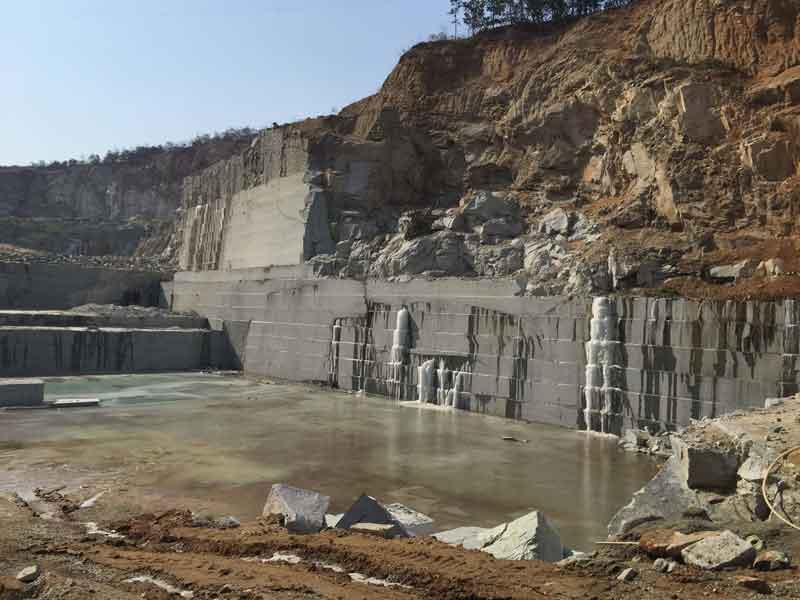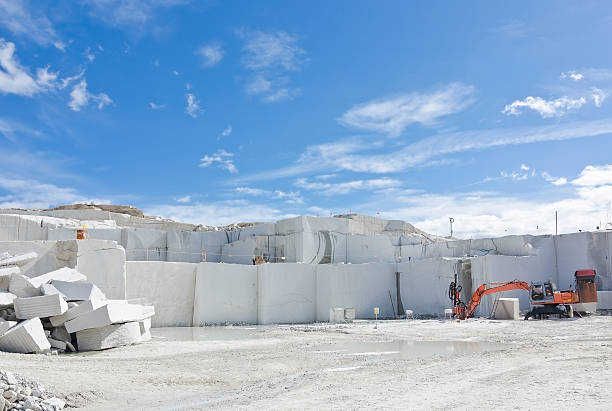Discovering Granite Quarries in South Africa Market: From Quarry to Work of art
Discovering Granite Quarries in South Africa Market: From Quarry to Work of art
Blog Article
Unveiling the Mysteries of Granite Quarrying: Where Strength and Style Meet
The world of granite quarrying is a world where the raw toughness of nature converges with human artistry to produce frameworks that stand the test of time with an air of sophistication. From the midsts of quarries to the precise polishing in workshops, the procedure of transforming granite right into building wonders is a complex dance of practice and innovation. As we peer into the midsts of this ancient craft, we begin to discover the surprise ins and outs that form the very essence of our developed setting.
The Beginnings of Granite Quarrying
In the annals of architectural history, the origins of granite quarrying are shrouded in a tapestry of ancient workmanship and geological wonders. Going back to old Egypt and Mesopotamia, the extraction of granite from quarries noted the start of a trip that would at some point result in the development of a few of the globe's most legendary structures.
Granite quarrying's origins can be traced to the competent artisans who identified the stone's resilience and aesthetic appeal. With a mix of primitive devices and large determination, these very early quarry employees uncovered granite blocks that would come to be the foundation of people.
As worlds progressed, so did the techniques of quarrying granite. The Romans, renowned for their engineering prowess, developed sophisticated approaches for drawing out granite to build monuments, holy places, and roadways that stood the test of time.
The heritage of these old quarrying practices proceeds to shape contemporary design, with granite continuing to be an icon of toughness and beauty in construction tasks around the world. (granite quarries in south africa)
Devices of the Quarrying Trade
The development of granite quarrying strategies from ancient civilizations to modern-day times highlights the crucial function played by the tools of the quarrying trade in forming the industry's methods. In old times, quarrying devices were simple, frequently including knives, hammers, and wedges made from products like bronze or iron. These devices called for considerable workforce and time to extract granite blocks from quarries.

Furthermore, the intro of pneumatically-driven devices and high-powered machinery has actually significantly decreased the physical labor required in quarrying procedures, enhancing worker security and performance. As the quarrying market remains to introduce, the devices of the profession stay at the forefront of driving progress and forming the future of granite extraction.
Drawing Out Blocks of Granite
Making use of precision equipment and progressed techniques, the extraction of granite obstructs from quarries has actually become an advanced process in the contemporary quarrying market. The preliminary action includes recognizing the area and size of the granite deposit to determine one of the most effective extraction approach. As soon as an appropriate site is chosen, the removal procedure starts with the drilling of openings for the positioning of explosives. Controlled blowing up strategies are then utilized to disintegrate the granite right into manageable areas.

Polishing and Completing Strategies
To attain a perfect surface area on granite blocks, proficient craftsmens use a collection of careful sprucing up and completing strategies. After the preliminary extraction and shaping processes, the granite blocks undertake a complete polishing phase to boost their natural appeal and toughness. One usual approach used in brightening granite is diamond abrasion, where commercial diamonds are made use view website of to grind and brighten the rock to a smooth surface. This procedure not just creates a lustrous surface area yet additionally guarantees harmony in shade and texture across the granite block.
In addition to sprucing up, ending up strategies are used to more fine-tune the granite's appearance. By meticulously selecting and applying these polishing and finishing techniques, craftsmens can transform raw granite blocks into beautiful pieces that display both toughness and elegance.

Environmental Impact and Sustainability
With the expanding focus on ecological consciousness in the industry, granite quarrying practices are significantly scrutinized for their effect on all-natural resources and lasting sustainability. Quarrying for granite can have substantial ecological ramifications. The extraction process commonly involves using heavy machinery, explosives, and large quantities of water, causing environment damage, dirt erosion, and water pollution. In addition, the transportation of granite from quarries to processing facilities generates carbon exhausts, additionally adding to ecological destruction. granite quarries in south africa.
To alleviate these influences and ensure sustainability in granite quarrying, sector stakeholders are taking on different measures. Carrying out sophisticated technologies to minimize power consumption and important site water usage, recovering quarried land for environmental restoration, and promoting accountable sourcing practices are some strategies being used. Additionally, accreditations such as the Forest Stewardship Council (FSC) and the Leadership in Power and Environmental Layout (LEED) assistance customers recognize ecologically pleasant granite products.
Final Thought
In conclusion, granite quarrying is a process that requires specialized tools and techniques to essence blocks of granite and brighten them to a high degree of coating. While the ecological impact of quarrying can be considerable, initiatives are being made to improve sustainability methods in the industry. Overall, granite quarrying is a fragile equilibrium official source in between taking advantage of the toughness and elegance of this natural stone while decreasing its influence on the environment.
Report this page